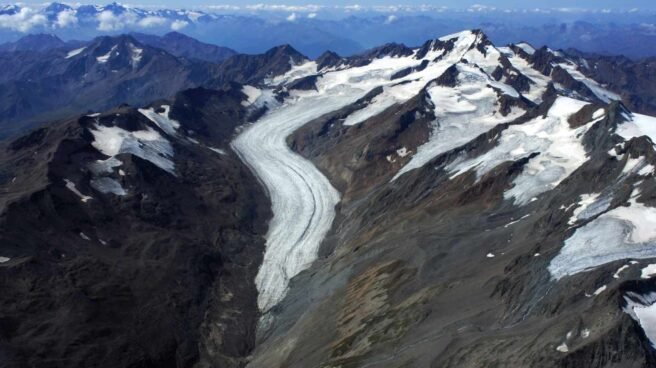Mountain glaciers vulnerable to alteration of the water cycle

Source
Mountains, sierras and very high mountain ranges exhibit a layer of ice as a result of precipitation (rain, snow or hail) that accumulates on them and compacts, grows and moves until it turns into liquid water or breaks abruptly. These are called mountain glaciers..
It depends on the water cycle, to which they belong. Their presence is the result of accumulated snow (precipitation) and melting (melting). The whole process is called glaciation..
In our South American subcontinent we have many examples of mountain glaciers. They are in the news for having entered into degradation and for being threatened by their destruction in pursuit of the mining of precious metals..
The news also highlights them by an accusation of their deterioration due to the warming of our planet by the burning of oil, coal and gas, what they call "climate change". According to this, the deterioration of glaciers is due only to the final thawing process..
We have been insisting that unlike the medieval approaches of unicausality, we must demonstrate concausality. A glacier does not melt because of an increase in temperature; it is the alteration of its entire process..
If the formation, accumulation, displacement and termination or ablation of the glacier depend on the water cycle, why not investigate whether precipitation is decreasing due to global dimming. This phenomenon since the mid-twentieth century has been positioned in the environmental scientific world and studies the decrease in rainfall due to pollution that alters the decrease in luminosity and thus decreases evaporation and subsequently the formation of clouds..
The mountain glaciers of the Venezuelan Andes in particular and of South America in general could be decreasing in size and thickness due to the process of global dimming and the lines of research should consider this..
0
0
0.000
As you say my friend, research should take into account the decrease in size and thickness of South American glaciers.
Greetings and thanks for sharing really relevant information.
Your post has been voted as a part of Encouragement program. Keep up the good work!
Use Ecency daily to boost your growth on platform!
Support Ecency
Vote for Proposal
Delegate HP and earn more